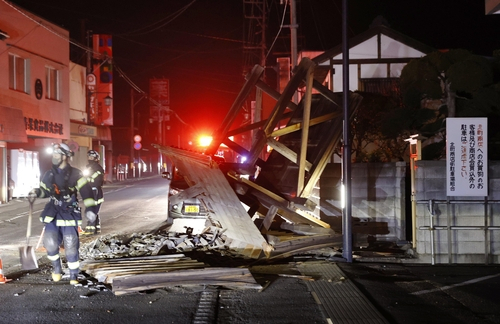Atomic Energy Regulatory Authority “There is no problem for safety due to low dose and radiation dose”
No change in radiation measurements at major nuclear facilities
 viewer
viewer
It was found that water overflowed from Fukushima No. 1 Nuclear Power Plant Units 5 and 6 due to the 7.3 earthquake that occurred on the 13th in Japan.
According to Kyodo News Agency on the 14th, water overflowed from the spent fuel tank (pool) at the top of each reactor building of Fukushima No. 1 Nuclear Power Plant Units 5 and 6 due to the shaking of the earthquake that occurred the day before.
It has not been confirmed that water has leaked out of the building, and there is no external impact, Tokyo Electric Power said. According to the local public broadcaster NHK, the Atomic Energy Regulatory Agency said that there was no safety problem due to the low amount of water overflowing and the radiation dose was low.
Water overflow was found on the fifth floor of a nuclear reactor building, where spent fuel was removed from the tank. Water overflow was confirmed in four places of Units 5 and 6. In addition, water was also found to overflow in the public tank building that stores spent fuel taken out of each nuclear reactor, and a small amount of water also overflowed from the spent fuel tank in Unit 1 of the Fukushima No. 1 nuclear power plant.
As of 1:30 am on the 14th, the Japan Atomic Energy Regulatory Commission announced that there was no change in the radiation measurements of each facility, such as nuclear power plants located in areas with strong vibrations, including the Fukushima No. 1 and No. It said no leaks were identified.
In Fukushima Okuma-machi and Futaba-machi, where the Fukushima Daiichi Nuclear Power Plant is located, a shaking of about 6 magnitude was observed. Jindo 6 is the level of shaking that makes it difficult to stand.
Most of the furniture that is not fixed moves and falls, and the door does not open due to the deformation of the building. In the case of a wooden building with low seismic resistance, the tile may fall or the building may tilt and fall.
Fukushima No. 1 Nuclear Power Plant Units 5 and 6 were supplied with emergency power during the Great East Japan Earthquake in March 2011, and the cooling system function was maintained, thus avoiding the worst accidents and was decommissioned in January 2014.
In contrast, Fukushima No. 1 Nuclear Power Plant Units 1 to 4 experienced a core melting (meltdown) in which nuclear fuel melted due to a power supply cut during the great earthquake, and a hydrogen explosion in a nuclear reactor building.
/ Reporter Noh Hee-young [email protected]
< 저작권자 ⓒ 서울경제, 무단 전재 및 재배포 금지 >
